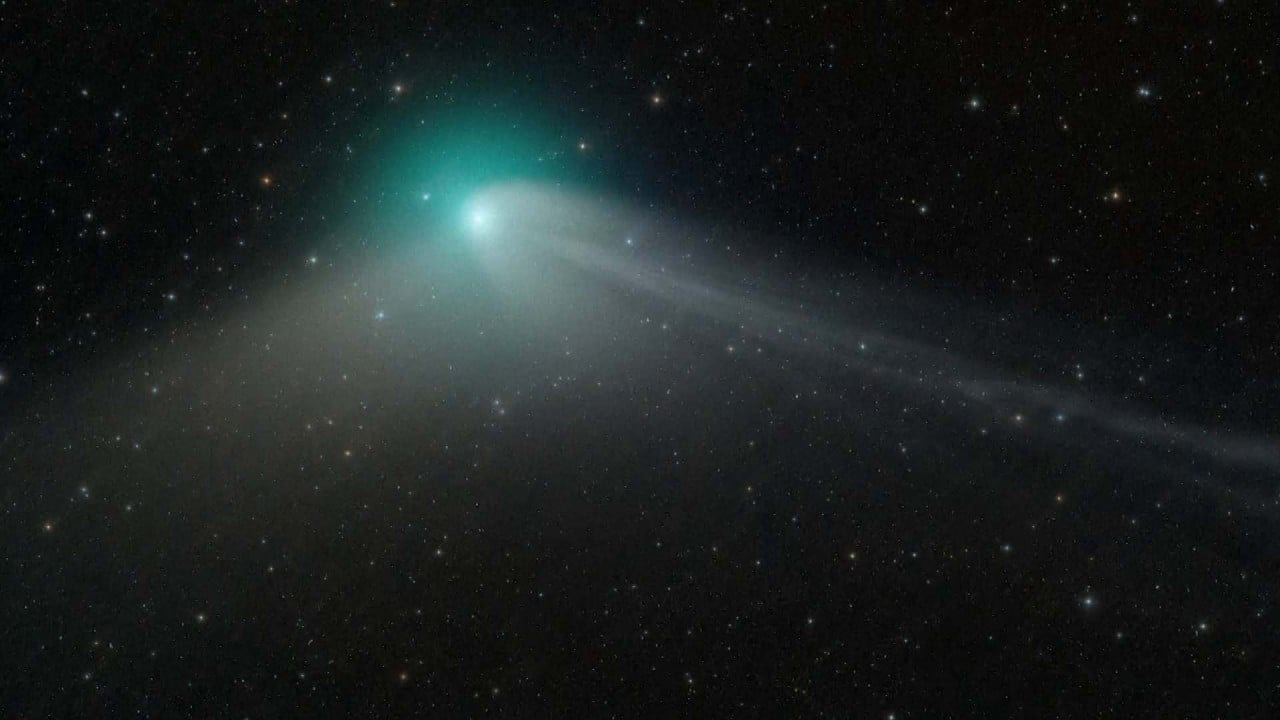“While the shock wave was expected to be very hot and short lived, our study showed that it was not the case within the first hours the star went supernova,” said the paper’s lead author Wang Xiaofeng from Tsinghua University in Beijing.
“It showed that the death of a massive star can be much more complex than previously thought,” he said.
Scientists have relatively well matched theories and observations on how stars of small or medium mass live and die, according to Wang. However, the evolution mechanism of massive stars, which by definition have eight times the mass of the sun or more, remain unclear.
When a star of around 18 solar masses was first discovered to have exploded by Japanese amateur astronomer Koichi Itagaki in May, it immediately became a treasure trove of observation data for scientists thanks to its extreme brightness and proximity to Earth.
As one of the most beautiful galaxies in the night sky, the Pinwheel galaxy is constantly photographed by amateurs around the world. Wang collected pictures from both professional observatories and amateurs to reconstruct the entire explosion process.
His team reached out to astronomy enthusiasts who had captured the galaxy before and after the supernova. Then the researchers retrieved information for each colour band, including red, green and blue bands, and did intensive calibration and comparison to obtain reliable multicolour photometry data.
To their surprise, the shock wave immediately after the explosion seemed to have a much lower temperature than expected.
“In the first couple of hours the shock wave appeared to be red, which corresponds to a few thousand degrees Celsius,” Wang said. Then it turned blue, or tens of thousands of degrees as predicted by the standard theory.
The shock wave was also observed to have lasted several hours – much longer than the predicted duration of about 30 minutes.
China casts ‘belt and road’ spell on world’s largest telescope project
China casts ‘belt and road’ spell on world’s largest telescope project
Wang said these observations provided direct evidence for the giant star to have emitted a considerable amount of gas and dust to form dense surroundings, which ended up absorbing much of the shock wave’s energy.
Meanwhile, the dust layers are probably asymmetrical, leading to the wave’s prolonged travel from the core to open space, he added.
“Our work wouldn’t be possible without the help of amateur astronomers in and outside China,” he said. “I really hope such collaboration will happen more often, and even open up a new paradigm in astrophysics research in the future.”
Eliot Herman, an emeritus professor of plant biology at the University of Arizona in the US, was one of the amateur astronomers contacted by Wang’s team.
Herman said he happened to notice the alert about the supernova, and he stayed up much of the night to grab images using a remote network of telescopes in Utah as the supernova became brighter and brighter.
When he was asked to share the original data set with Wang’s group, Herman happily agreed. His data and that from other amateurs was merged, resulting in the analyses and conclusions outlined in the Nature paper.
Compared with professional observatories, which often operate based on schedules, amateurs have more flexibility, Herman said.
“Amateurs can change their minds and jump on the alert of new objects of interest,” he said.
Astronomy was a unique discipline in which amateurs played a significant role, Herman said. Historically, the science was done largely by amateurs and academics funded by rich people before it became government-funded.
Today, there is no other mainstream discipline like astronomy.
“I was at one time a programme manager at the National Science Foundation (in biology), and I never saw a grant or project with an amateur participating,” he said.
China’s Super Tau-Charm Facility particle collider to test theory of matter
China’s Super Tau-Charm Facility particle collider to test theory of matter
Astronomy welcomes amateurs, including people from all walks of life who love the search for the wonders of the universe.
“This synergy is science at its best. I’m so thrilled to be included in this project and its publication,” Herman said.




